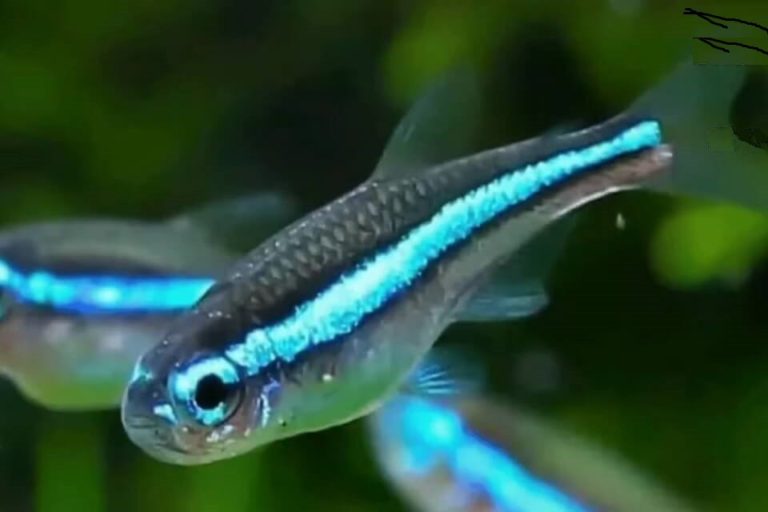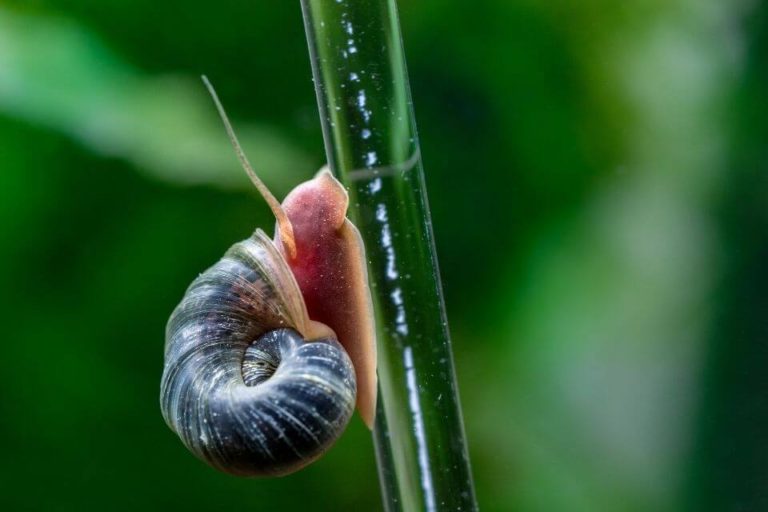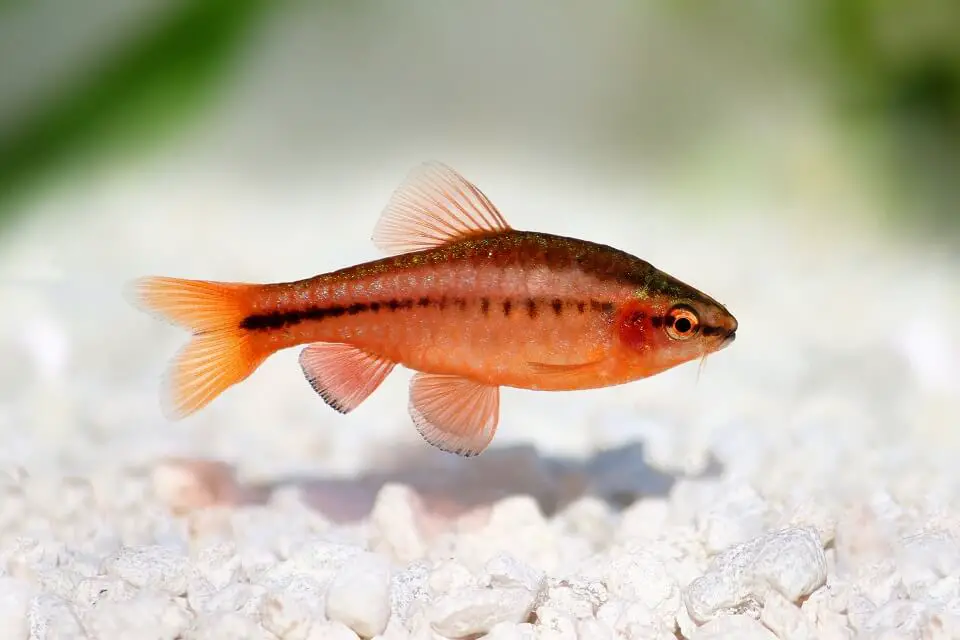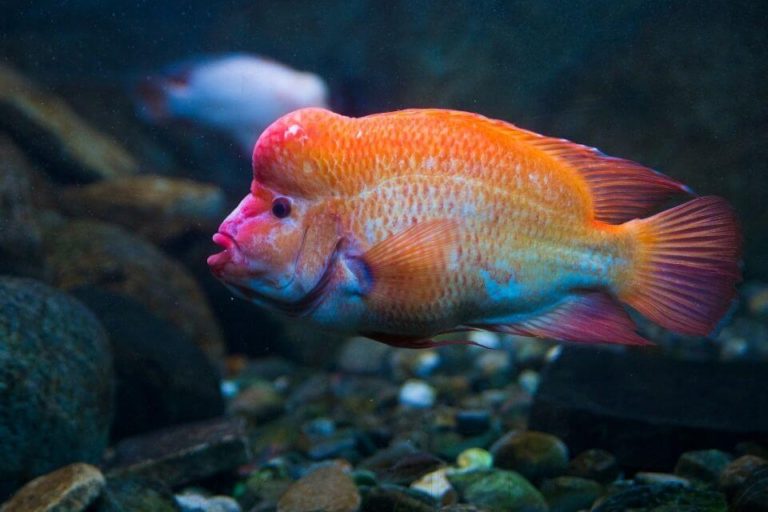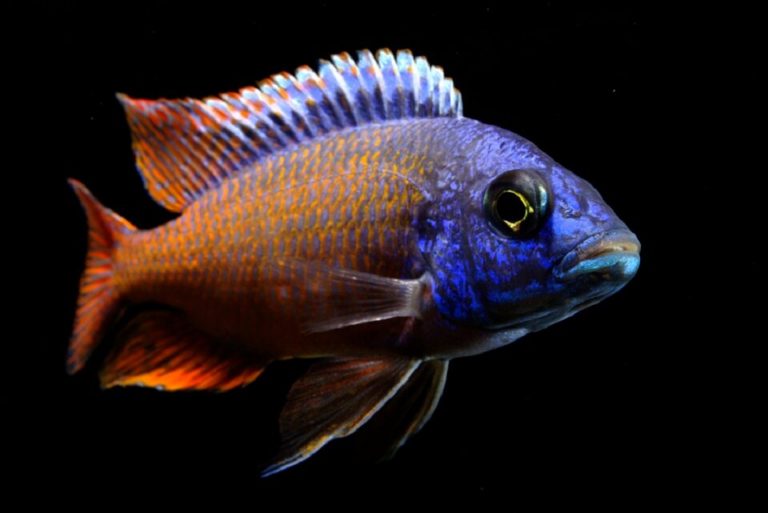Rubber Lip Pleco Care : Size, Lifespan, Diet, Tank Mates & Best Tank Size
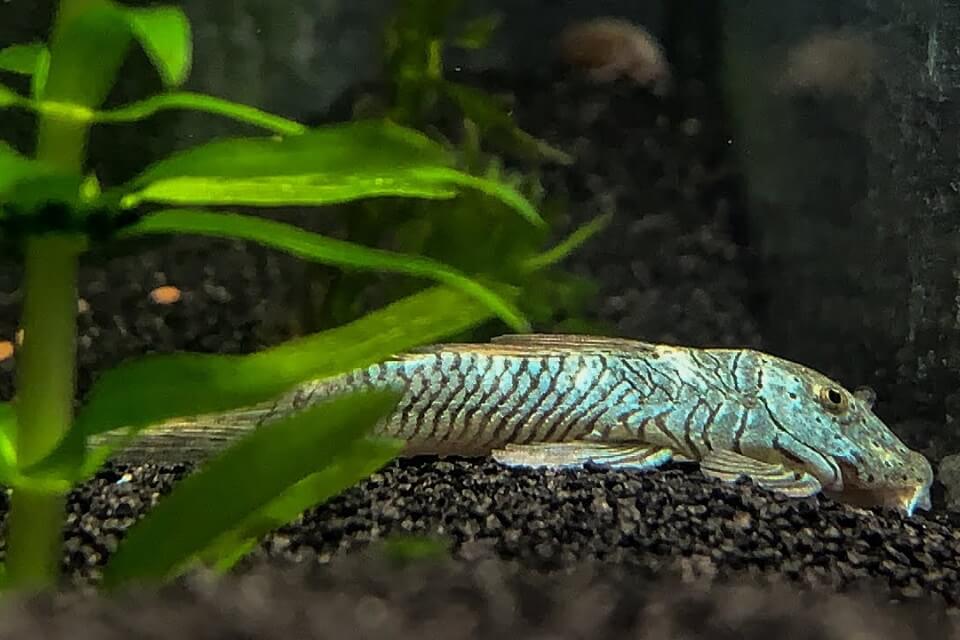
Looking for a comprehensive guide to the Rubber Lip Pleco (L-146)?
You’ve come to the right place! In this article, we will discuss everything you need to know about this fascinating fish, from its natural habitat to its dietary needs.
We will also provide a species profile of the Rubber Lip Pleco, including information on its size, temperament, and breeding habits.
So whether you are considering adding a Rubber Lip Pleco to your tank or are just curious about these amazing creatures, read on for all the facts! So, let’s dive deeper!
| Quick Facts: | |
|---|---|
| Common Names : | Rubber Lip Pleco, Pleco L146 |
| Origin : | Amazon River basin |
| Family : | Loricariidae |
| Scientific Name : | Chaetostoma milesi (L146) |
| Care Level : | Medium |
| Temperament : | Peaceful |
| Social : | Community friendly |
| Diet : | Omnivores |
| Size (average) : | 5 - 7 inches |
| Lifespan : | 10 - 12 years |
| Breeding : | Egg layer |
| Minimum Tank Size: | 25 gallons (about 95 liters) |
| Tank Environment : | Freshwater, gravel or fine sand substrate, Tall aquarium plants, rocks, caves, and driftwood. Medium lighting |
| Temperature : | 72 to 80°F (22 to 27 °C) |
| Water Hardness : | 6 – 14 dGH |
| Water pH Level : | 6.5 - 8.0 |
Species Overview
The Rubber Lip Pleco (Chaetostoma milesi) is a freshwater fish that originates from the Orinoco and Amazon river basins in South America.
It is a member of the armored catfish family Loricariidae, which contains over 600 different species. It numbered L146 based on Loricariidae naming standards.
The Rubber Lip Pleco gets its name from its large, fleshy lips, which are used to suck food off of the riverbed. This fish reaches a maximum length of about 7 inches (18 cm) that can be fit in a 25 gallons aquarium (about 95 liters).
They typically have a dark brown or black body with a pale-yellow stripe that runs along the top of their head. It is a slow-moving bottom dweller that prefers cool, murky water with plenty of hiding places.
The Rubber Lip Pleco is a nocturnal creature and is most active at night. In the wild, this species feeds primarily on algae, but it will also eat small insects and crustaceans. It has a hearty appetite and can consume up to 20% of its body weight in food each day.
Rubber Lip Pleco Size
The Rubber Lip Pleco size typically grows to a length of around 5 to 7 inches in captivity. However, in the wild, it can reach up to 9 inches. These fish aren’t very big unlike some of their pleco cousins.
Rubber Lip Pleco size is primarily impacted by the availability of food, care, and tank environment they live in. If they have plenty to eat, they will grow larger.
Additionally, their genetics and the overall care quality will also impact their size. It is rare to find this species exceeding 9 inches in the aquarium trade.
Rubber Lip Pleco Lifespan
The Rubber Lip Pleco lifespan is around 10 to 12 years, although some have been known to live little more than 12 years with proper care. They are hardy fish that can withstand a wide range of water conditions, but they prefer cooler temperatures and low light levels.
To ensure your Rubber Lip Pleco lives a long and healthy life, provide them with a well-maintained aquarium that mimics their natural habitat as closely as possible.
If your Pleco experience any stress or are kept with an aggressive fish species, Rubber Lip Pleco lifespan may be shortened.
Rubber Lip Pleco Appearance & Colorations
Just as their name suggests, the Rubber Lip pleco has a unique “Pleco” appearance. This makes them quite popular for many fishkeepers, but aquarists confuse them with other Pleco species. Their bodies resemble the exact pleco mold that you are familiar with.
They have a big suckermouth that is great for scavenging, as well as armored plates along their body. The unique thing about this pleco is their large lips. They use these rubber lips to help them eat algae off of surfaces.
Their eyes are positioned on top of their head, which allows them to see predators and prey easily. Just like other plecos, they have barbels around their mouth that help them find food in the dark. They use these same barbels to build nests for their eggs.

Their fins are short and stubby, which helps them move about quickly in the water. Their dorsal fin starts at the middle of their back and runs to the end of their tail.
They have a small anal fin that is positioned just before their vent. Both of these fins help them steer and change directions quickly in the water.
As mentioned, the Rubber Lip Pleco has large, fleshy lips and a dark brown or black body with a pale yellow stripe that runs along the top of its head. Some individuals may also have spots on their bodies.
Juveniles typically have more vibrant colors than adults. They have a pattern of markings along their sides that are unique to each fish.
The coloration of this fish can vary depending on the water conditions in its habitat. In murky water, it will be darker with less visible markings.
In clear water, it will be lighter in color and the markings will be more pronounced. Additionally, their color may also change as they age and gender.
This species is commonly confused with the Gold Nugget Pleco and the Bristlenose Pleco. The Gold Nugget Pleco has a golden body with black spots, while the Bristlenose Pleco has long bristles on its nose.
Behaviour & Temperament
The Rubber Lip Pleco is a peaceful fish that does well in community aquariums. They are not known to be aggressive and will get along with most other fish species. However, they may compete with other bottom-dwelling fish for food.
This pleco is nocturnal, so it will be the most active at night. During the day, it will hide in caves or among plants. When first introduced to the aquarium, it may be shy and take some time to adjust. Once it becomes acclimated, it will be more active.
Moreover, when kept with other plecos, it may become more social.
While they are peaceful fish, they can be territorial when it comes to their food. They may become aggressive towards others if they are trying to eat from the same spot.
When they are out in the open, they like using their sucker mouth to attach themselves to surfaces. This is beautiful if your aquarium is made of glass
This fish is a great addition to most aquariums because it is peaceful, low-maintenance, and can help keep the tank clean. If you are looking for a pleco that is a little different from the rest, the Rubber Lip Pleco is a great option!
Rubber Lip Pleco Care and Tank Setup
The Rubber Lip Pleco is a hardy fish that can withstand a wide range of water conditions, but they prefer cooler temperatures and low light levels.
To ensure your Rubber Lip Pleco lives a long and healthy life, provide them with a well-maintained aquarium that mimics their natural habitat as closely as possible. If they experience any stress or are kept with an aggressive fish, their lifespan may be shortened.
– Rubber Lip Pleco Tank Size
The recommended Rubber Lip Pleco tanks size is 25 gallons or more (about 95 liters). They enjoy plenty of space and feel stressed if put in cramped spaces.
If the tank is smaller, than the ideal size, it can make the fish more aggressive and territorial. If your Rubber Lip Plecos are fully grown, you can relocate them to a larger tank of about 75 gallons or more (about 283 liters).
– Rubber Lip Pleco Tank Setup
Just like other Plecos, the Rubber Lip Pleco does well in a planted aquarium. It will help to keep the tank clean by eating algae off of surfaces. Your Rubber Lip Pleco tank setup can include some rocks and driftwood for them to hide in and play around with.
It is advisable to mimic their natural habitats. To make them feel at home, use a soft sand substrate, smooth stones, and plenty of aquarium plants. Avoid using anything that could tear their delicate flesh, such as sharp rocks or shells.
Their tank should be filtered with a good-quality canister filter. Be sure to perform regular water changes and keep the tank clean to prevent ammonia and nitrite levels from rising. This species also needs quality lighting to help them thrive and stay healthy.
While they do not require intense light, a low to moderate light level should be provided. You can also add floating plants to help diffuse the light and provide them with some hiding spots.
– Water Conditions and Parameters
The Rubber Lip Pleco can tolerate a pH range of 6.5 to 8 and they prefer water that is on the cooler side. The temperature is between 72 to 80°F (22 to 27 °C). Water hardness should be between 6 and 14 dGH.
To keep them healthy and thriving in your aquarium, you will need to monitor the water conditions and make sure they are within their preferred parameters.
You should also perform regular water changes to prevent high ammonia and nitrite levels. This species is sensitive to parameter shifts so don’t change too often. Use an aquarium water heater to maintain the water temperature consistently in the colder months.
– Suitable Aquarium Plants
The Rubber Lip Pleco does well in a planted aquarium. It will help to keep the tank clean by eating algae off of surfaces. You can also add some rocks and driftwood for them to hide in and play around with.
Some plants that do well with this species include:
- Java Ferns
- Anubias
- Hornwort
- Duckweed
- Root Floater
- Cabomba
- Water Wisteria
- Water Lettuce
- Amazon Swords
– Common Diseases and Prevention
Like other plecos, the Rubber Lip Pleco is susceptible to a variety of diseases. Some common diseases include Ichthyophthirius multifiliis (ICH), bacterial infections, skin flukes, and fungal infections.
Some of these diseases can be prevented by maintaining good water quality and keeping the tank clean.
It is also important to quarantine new fish before adding them to your aquarium. This will help to prevent the spread of diseases and parasites.
If you notice any unusual behavior or changes in appearance, take your fish to a veterinarian who specializes in aquarium fish. They will be able to diagnose and treat the problem.
To help prevent your fish from becoming ill, it is important to maintain good water quality and provide them with a well-balanced diet. You should also quarantine new fish before adding them to your tank.
Preventive care is the best way to keep your Rubber Lip Pleco healthy and thriving. By providing them with a suitable environment and keeping water quality parameters in check, you can help reduce the likelihood of them becoming ill.
If your Rubber Lip Pleco does become ill, you will need to treat them with the appropriate medication. Be sure to follow the instructions on the package and keep a close eye on your fish during treatment.
Rubber Lip Pleco Food and Feeding
The Rubber Lip Pleco is an omnivore and will eat a variety of foods. They are known to be particularly fond of algae, but you should also provide them with a well-rounded diet that includes both plant and animal matter.
There are no exceptions of algae that this pleco will not consume. You can feed your Rubber Lip Pleco a variety of foods, including algae tablets, blanched vegetables, sinking pellets, and frozen or live foods.
Be sure to offer them a variety of food items to keep them healthy and happy. A well-balanced diet is essential for the health of your Rubber. You should not solely rely on naturally grown algae as the only food source for your Rubber Lip Pleco.
While algae is an important part of their diet, you should also offer them a variety of other food items to ensure they are getting all the nutrients they need.
You should feed your Rubber Lip Pleco two to three times a day. Be sure to remove any uneaten food after each feeding. This will help keep the water clean and prevent pollution.
Do not overfeed your fish as this can lead to health problems. Typically, they should finish their food within two minutes or so.
Gender Difference of Rubber Lip Pleco
The male and female Rubber Lip Pleco have some slight differences in their appearance. The male will typically be smaller than the female and have a more elongated body shape.
His fins will also be longer and narrower. The female will be larger than the male, and her fins will be shorter and wider.
Additionally, the female will have a more rounded body shape.
Breeding Rubber Lip Pleco
Rubber Lip Plecos are hard to breed. There is no guarantee that your fish will successfully breed even if all the conditions are met.
The best way to increase your chances of breeding Rubber Lip Plecos is to have a group of at least six fish. This will give you the best chance of getting them to spawn. You will also need to provide them with a suitable breeding habitat.
Some things to consider include plenty of hiding spots, a gentle water current, and a temperature range of 70 to 79 degrees F (21 to 26 degrees C).
If you are successful in breeding your Rubber Lip Plecos, you can expect anywhere from 20 to 100 eggs. The eggs will hatch in about five to seven days and the fry will be free-swimming after another week.
You should raise the fry in a separate tank from the adults. Be sure to provide them with plenty of hiding spots and a diet of small live foods. The fry will grow quickly and can be moved to the main tank after a few months.
Rubber Lip Pleco Tank Mates
The Rubber Lip Pleco is a peaceful fish and can be safely housed with a variety of other fish species. Some good tank mates include other types of Plecos, Catfish, Small to medium-sized Gouramis, and Barbs.
Be sure to avoid housing them with aggressive or territorial fish, as this could lead to problems. Additionally, be sure to provide them with plenty of hiding spots as they can be timid fish.
When choosing Rubber Lip Pleco tank mates, it is important to consider the size of your fish. The Rubber Lip Pleco can grow to be quite large, so you will need to choose fish that are appropriate in size.
Additionally, avoid housing them with aggressive or territorial fish as this could lead to problems. Some of the aggressive fish that should be avoided include Cichlids and larger Plecos.
The most recommended fish species to keep as Rubber Lip Pleco tank mates are:
- Black Neon Tetra
- Ember Tetra
- Black Phantom Tetra
- Honey Gourami
- Dwarf Gourami
- Cherry Barb
- Sparkling Gourami
- Cory Catfish
- Fantail Goldfish
- Ryukin Goldfish
- Pearlscale Goldfish
- Vampire Shrimp
- Zebra Danio
Origin and Distribution
The Rubber Lip Pleco is a native of South America and can be found in the Amazon River basin.
Their natural habitat includes slow-moving, dark waters with plenty of vegetation. They are often found hiding among the roots and branches of submerged trees and plants.
Moreover, they are known to be a nocturnal species and spend most of the day hiding in dark, sheltered areas.
During the monsoon season, they will migrate to flooded forests in search of food. This shows that this species is hardy and can tolerate a wide range of water conditions.
FAQs
Are Rubber Lip Plecos Aggressive?
No, Rubber Lip Plecos are not aggressive. They are peaceful fish that can be safely housed with a variety of other fish species. However, they can be timid fish and may hide if they feel threatened. Be sure to provide them with plenty of hiding spots in their tank.
Does A Rubber Lip Pleco Have Teeth?
Yes, a Rubber Lip Pleco has small, sharp teeth that are used for eating algae. They are not harmful to other fish in the tank. These teeth are ideal for scraping algae off of rocks and other surfaces in the tank.
How Fast Does Rubber Lip Plecos Grow?
Rubber Lip Plecos grow relatively quickly. They can reach a length of 12 inches (30 cm) in just a few years. However, they typically only grow to be about half that size in the home aquarium.
A fully grown Rubber Lip Pleco can be quite a large fish and should not be housed with small fish.
Do Rubber Lip Plecos Eat Hair Algae?
Yes, a Rubber Lip Pleco will eat hair algae. They have sharp teeth that are perfect for scraping algae off of rocks and other surfaces in the tank. They will also eat other types of algae, making them ideal for cleaning up an aquarium.
Additionally, they are known to be a nocturnal species and will often come out at night to eat algae.
Does Rubber Lip Plecos Need Driftwood?
Not really. Rubber Lip Pleco does not require driftwood but it can be added for decoration purposes and as hiding spots. They are peaceful fish that can be safely housed with a variety of other fish species.
However, they may hide if they feel threatened. Be sure to provide them with plenty of hiding spots in their tank. Also, be sure to provide them with a diet of small live foods.
How Long Can Plecos Go Without Eating?
Plecos can go without eating for a few weeks, precisely two (2) weeks. They are known to be a nocturnal species and will often come out at night to eat algae.
Additionally, they are not aggressive fish and will not compete with other fish for food. However, it is important to provide them with a diet of small live foods to ensure that they are getting enough to eat.
But, if you are planning to be gone for more than two weeks, it is best to leave food in their tank for them to eat.
Can Rubber Lip Plecos Live with Fancy Goldfish?
Yes, absolutely. Rubber Lip Pleco can be housed with fancy goldfish. Additionally, this Pleco does not have sharp teeth that can harm the delicate fins of the Goldfish. Therefore, the Fancy Goldfish can be kept as tank mates.
How Much A Rubber Lip Pleco Cost?
The Rubber Lip Pleco is a relatively inexpensive fish. They can be found for as little as $15. However, they are often sold for closer to $30. This price range makes them affordable for most people interested in keeping them as pets.
If you are buying in bulk, you may be able to get them for even less money.
Summary
The Rubber Lip Pleco is a hardy, nocturnal fish that is perfect for cleaning up an aquarium. They are peaceful fish that can be safely housed with a variety of other fish species.
They have sharp teeth that are ideal for scraping algae off of rocks and other surfaces in the tank. Additionally, they require a diet of small live foods.
They are a relatively inexpensive fish and can be found for as little as $15. If you are interested in keeping them as pets, be sure to provide them with plenty of hiding spots in their tank.
With this guide, you are now ready to add a Rubber Lip Pleco to your aquarium.


